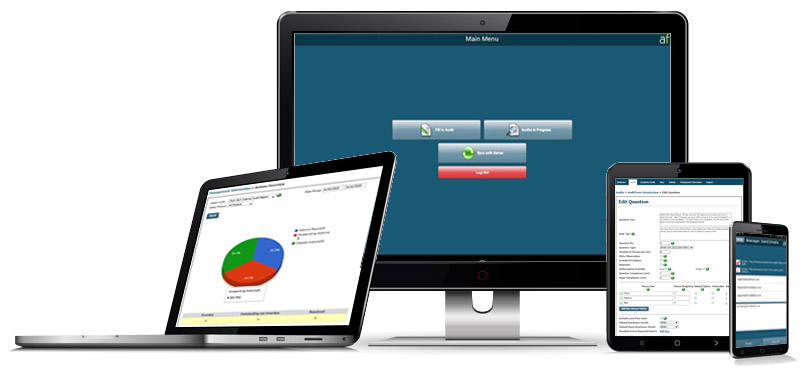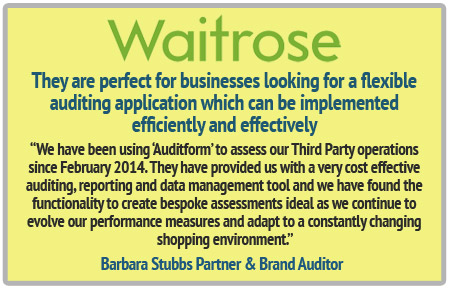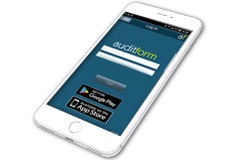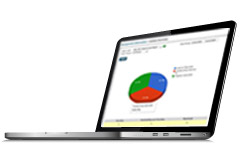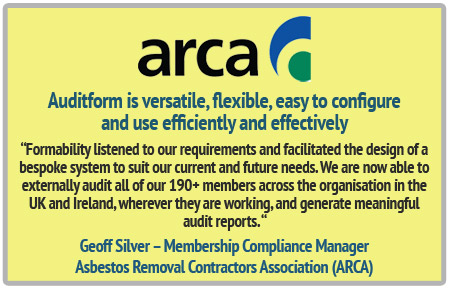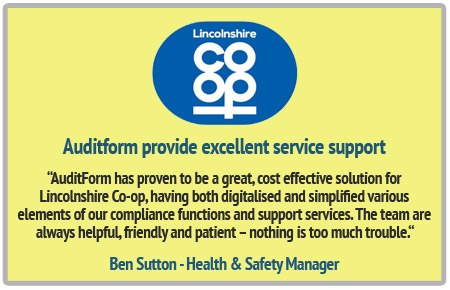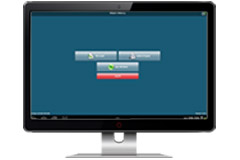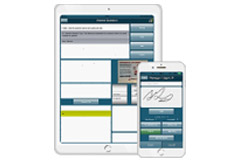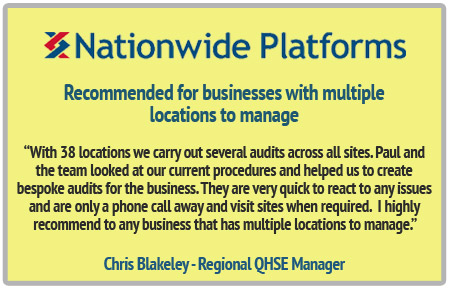Internal Audit Software For Effective Streamlined Operations
Internal Auditing Software Essentials
Streamlining Audit Planning
Effective cloud-based internal auditing software provides enterprises with risk assessment tools that enable precision and foresight in audit planning, ensuring resources are optimally deployed.
Integrating risk assessments, documentation and audit programs within a singular platform of compliance monitoring solutions,
promotes a cohesive approach, rendering the planning stage not only thorough and effective.
Enhancing Audit Execution
Enhanced audit execution through software streamlines workflows, fostering accuracy and swiftness of audits.
Utilising advanced audit report generation tools like Auditform allows for real-time tracking of progress, ensuring a timely and thorough audit process.
Audit quality is optimised by leveraging internal control audit software that integrates audit execution with strategic objectives, mitigating risks while aligning with organisational goals.
Optimising Reporting Processes
Efficient reporting processes are essential for auditors to convey findings succinctly and effectively, ensuring that stakeholders comprehend the implications and recommended actions.
Elegant visualisations within reports can transform complex data into digestible insights that support strategic decision-making. Indeed, automated report generation significantly condenses the timeframe required for report preparation.
Furthermore, the capacity to customise reports to address specific stakeholder interests or concerns enhances receptivity and facilitates more impactful communication.
Reporting can be standardised by internal audit software UK with customisable templates scan be tailored effortlessly to each audit’s scope, fostering consistency while retaining the flexibility to highlight unique issues or insights.
Audit software’s analytics capabilities extend to reporting, enabling auditors to incorporate statistical evidence and trend analysis with ease, further enriching the narrative.
Advanced filtering and sorting mechanisms within these platforms streamline the synthesis of information, allowing auditors to focus more time on analysis rather than administration. Enterprise risk management (ERM) software is one example.
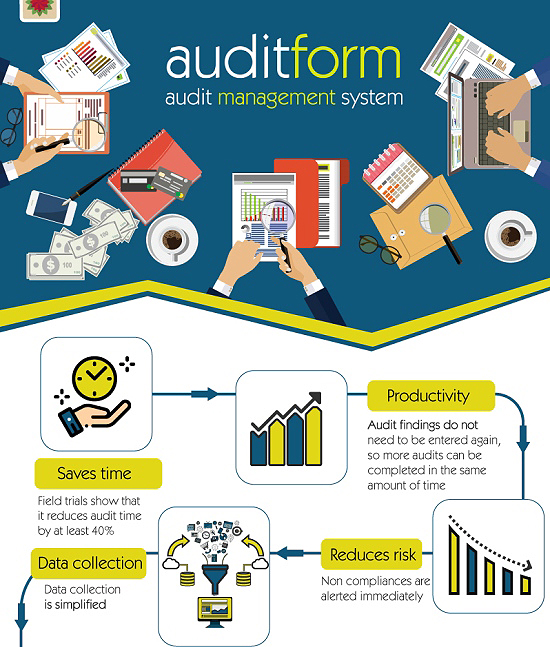
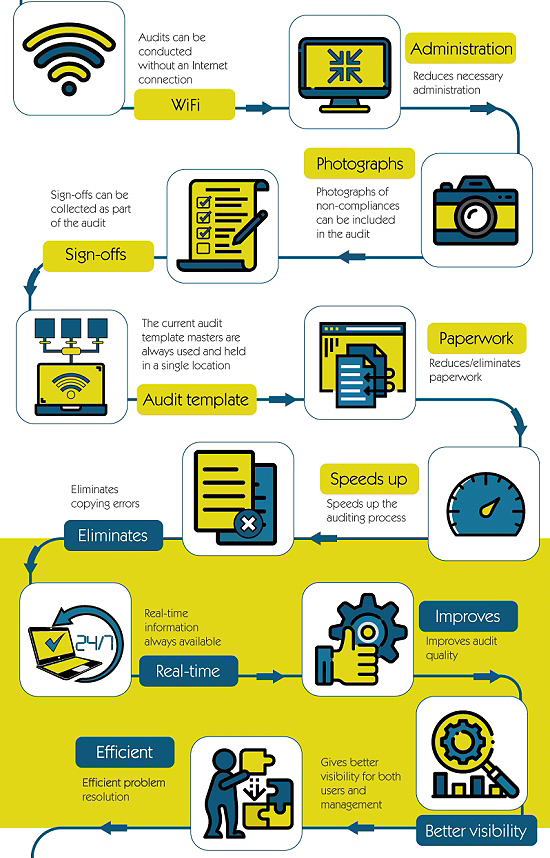
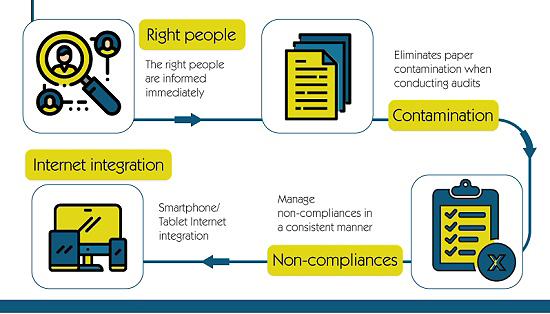
Key Features of Internal Auditing Software
Effective internal audit software is distinguished by a robust set of key features that collectively underpin streamlined audit operations.
At the forefront is the risk assessment functionality of operational audit tools which enables auditors to pinpoint and prioritise areas of high risk, delivering strategic insights into where audit resources should be concentrated.
Audit workflow automation is integral, simplifying mundane tasks and ensuring a consistent approach throughout the audit cycle.
The incorporation of real-time dashboards presents a dynamic overview of the audit universe, allowing for immediate identification of issues and tracking of progress.
Audit software must be equipped with a sophisticated document management system, which organises evidence and facilitates a seamless review process.
Furthermore, customisable report generation tools empower auditors to produce professional, comprehensive reports that communicate findings effectively.
Enhanced data capabilities are fundamental, providing the means to dissect complex datasets and unearth substantive conclusions.
Interoperability of audit software systems with other organisational systems through APIs or data imports ensures that the audit software remains a central repository, integrating well with broader enterprise frameworks.
Lastly, continuous auditing technology enables compliance with regulatory standards and data security protocols assures that sensitive information is handled with the highest level of confidentiality and integrity.
Top-rated Internal Audit Software with Real-time Data
Real-time data enables auditors to detect and respond to issues with remarkable swiftness.
Auditors can harness this instantaneous intel to identify trends, flag anomalies, and adroitly adjust their audit focus in real time. This dynamic approach to data analysis can markedly improve operational responsiveness, ensuring that potential issues are addressed before they escalate.
Moreover, the power of real-time data underscores its utility in risk management and control monitoring. By continuously analysing transactions and events as they occur, auditors can provide management with the highest degree of assurance.
This ongoing surveillance helps in pre-empting risks and fortifying the organisation’s control environment, exemplifying the strategic advantage of a sophisticated audit operation.
Automated Workflows for Efficiency
Through the deployment of internal audit planning solutions with systematic, predefined procedures, auditors can focus on more complex analysis and decision-making.
Automation streamlines audit tasks, reducing manual input and the potential for error.
Complex processes, such as risk assessments and control testing, benefit from automation by standardising methodologies and ensuring consistency and contributing towards an effective governance, risk, and compliance (GRC) platform.
Ensuring adherence to audit schedules becomes less burdensome with automated reminders and task allocation, enabling auditors to concentrate on the tasks at hand without overlooking key deadlines.
Intelligent automation not only schedules and executes routine tasks but also analyses data patterns to predict potential issues, allowing auditors to intervene before they escalate into material concerns.
Rigorous audit trails are effortlessly maintained, as automated processes document each step, ensuring regulatory audit compliance
and providing a transparent and retrievable history of actions.
Affordable Compliance and Auditing Software Solutions
Integrated compliance management is essential for maintaining oversight and ensuring adherence to regulatory frameworks.
- Centralisation of Regulatory Requirements: Streamlining the process of tracking standards and regulations pertinent to the organisation.
- Automated Monitoring and Reporting: Employing systems that continuously scan for compliance status and generate necessary reporting.
- Risk Identification and Assessment: Systematic identification and evaluation of compliance risks with risk and control matrix software within the internal audit process.
- Control Activities: Implementation and tracking of internal controls designed to ensure compliance and mitigate risk.
- Training and Support: Facilitating ongoing education and guidance for staff on compliance procedures and changes in regulations.
These elements synergise to provide an efficient and cohesive approach to compliance.
Operational efficacy is bolstered by a internal control management software platform that integrates these compliance management components seamlessly.
The Selection Criteria
In the process of identifying an appropriate internal audit software UK solution, it is imperative to establish a set of rigorous selection criteria for the internal audit checklist application.
This should invariably encompass the system’s functionality, ensuring that it aligns with the unique compliance and risk management requirements of the organisation.
Integration capabilities loom large in this consideration, as the software must play well with existing systems to reinforce a holistic operational ecosystem.
User accessibility ought to be at the forefront, to facilitate a user-friendly experience for auditors and relevant personnel.
Additionally, scalability is crucial, as the software must adapt to the evolving landscape of regulatory requirements and corporate growth.
Lastly, support and training resources provided by the software vendor are essential elements to ensure that the organisation can leverage the system to its full potential, ensuring a robust compliance posture.
Customisability and Scalability
The efficacy of audit software hinges on its ability to tailor to specific organisational needs and to expand in line with company growth.
- Flexibility in Configuration: The software must offer versatile settings to accommodate unique audit processes.
- Modules and Features: It should possess a range of modules that can be enabled or disabled to suit varying requirements.
- Upgradability: The system ought to allow for seamless updates incorporating new regulations and standards.
- User Access Management: It is vital that access levels can be customised to reflect different roles within the organisation.
- Data Handling Capacity: As businesses grow, so too should the software’s capability to handle increasing volumes of data.
A truly scalable internal audit software for growing companies adapts not only in functionality but also in its capacity to manage larger datasets in the audit evidence management system.
User-Friendly Interfaces
Effective internal audit software UK necessitates interfaces designed for optimal user engagement and efficiency.
- Intuitive Navigation: Ensure the layout enables auditors to find features and data with minimal effort.
- Clear Visuals: Employ a design that uses visual cues effectively to enhance readability and reduce cognitive load.
- Responsive Design: The interface must accommodate different devices, providing a consistent user experience across platforms.
- Accessible Help and Support: Built-in guidance, such as tooltips and help buttons, should be readily available.
- Customisation Options: Users should have the ability to personalise dashboards and reports to fit their individual working styles.
A user-friendly interface can transform the auditing process, making it more dynamic and less prone to errors thus reinforcing internal audit quality assurance.
Use Your Own Data and Take Auditform For A FREE Test Drive !
Get a “hands-on” introduction to Auditform’s functionality and get a real feel of what it’s like to use our app software for FREE.
Then use our software and interact with Auditform’s easy to use functions. It’s a great way to get a feel for how Auditform can benefit your organisation, ensuring you make an informed decision.

Helpful Insight & Development

Unrivalled Support

20 Year Successful Track Record
Happy Market Sector Clients
We Have Tailored Our App Very Economically To Meet The Specific Needs Of Many Different Organisations Around The World
Construction

Facilities Management

Inspection

Retail

Transportation

Engineering

Food Processing Safety

Manufacturing

Health & Safety

Consultancy
Frequently Asked Questions
1. What is internal audit software?
Internal audit software is a specialized tool that helps auditors and compliance professionals streamline their operations by automating various audit processes and tasks.
2. How does internal audit software benefit auditors?
Internal audit software offers numerous benefits to auditors, including improved efficiency, enhanced accuracy, better risk management, and increased collaboration among audit teams.
3. What features should I look for in internal audit software?
When choosing internal audit software, it is important to consider features such as risk assessment capabilities, customizable audit templates, document management, data reporting, integration with other systems and user-friendly interface.
4. Is internal audit software suitable for small businesses?
Yes, Auditform is user-friendly internal audit software for beginners and experts alike. It has proven to be one of the best internal auditing software solutions for small businesses. It helps them establish effective internal controls, identify and mitigate risks, and ensure compliance with regulations, all while saving time and resources.
5. How can I select the right internal audit software for my organisation?
To select the right internal audit software for your organization, it is recommended to assess your specific needs, evaluate different software options, consider user reviews and ratings, and request demos or trials to test the software’s functionality and compatibility with your existing systems.
6. Is internal audit software secure?
Yes, Auditform prioritises data security and implement robust security measures to protect sensitive information. It is important to choose a software provider that offers encryption, access controls, and regular security updates to ensure the confidentiality and integrity of your audit data.
Other Articles
Effective Audit Systems Software for Seamless Auditing Processes
Audit Management Software, Efficient Solutions at Your Fingertips
Top Audit Tracking Software for Efficient Workflow Optimization
Efficient Software for Audit Processes: Simplify Auditing Tasks
Best Audit Software Tools for Efficient Auditing
Top Online Audit Software for Effective Management and Compliance
Audit Compliance Software: Essential Tools for Reporting
Top External Audit Software Solutions in the UK

